The AnandTech Coffee Lake Review: Initial Numbers on the Core i7-8700K and Core i5-8400
by Ian Cutress on October 5, 2017 9:00 AM EST- Posted in
- CPUs
- Intel
- Core i5
- Core i7
- Core i3
- 14nm
- Coffee Lake
- 14++
- Hex-Core
- Hyperthreading
Differences from Coffee Lake to Kaby Lake
Physical Design: Pin Outs
The platform for the new Coffee Lake systems is going to look and feel very similar to the 6th and 7th Generation platform, with some minor differences, but this could lead to a lot of confusion.
Intel has made it very clear that Coffee Lake processors will work only in Z370 motherboards, and not in the previous generation Z270 motherboards. This despite the fact that both generations of boards share the same socket design due to how the pins are used. In Intel’s 8th Gen datasheet posted online, a full pin-out is provided, showing that there is indeed a difference between the new Coffee Lake processors and the older Kaby Lake processors, and what those specific differences are.
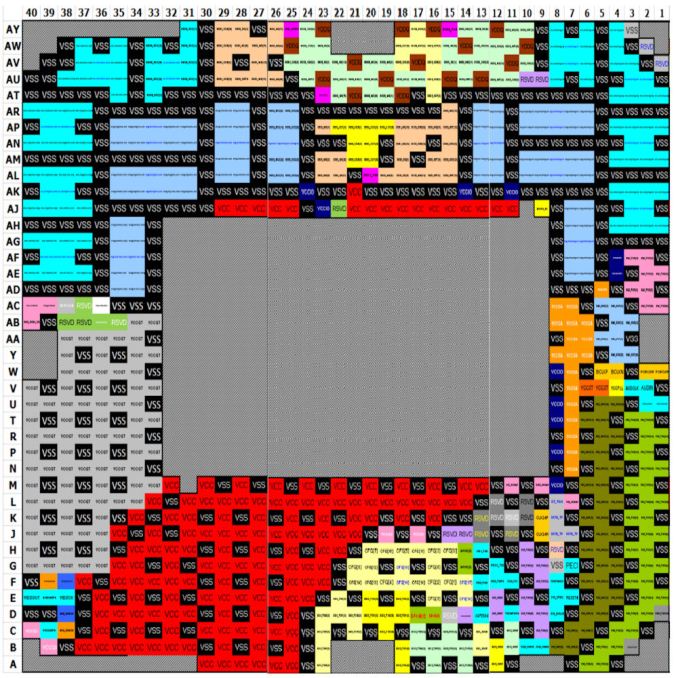
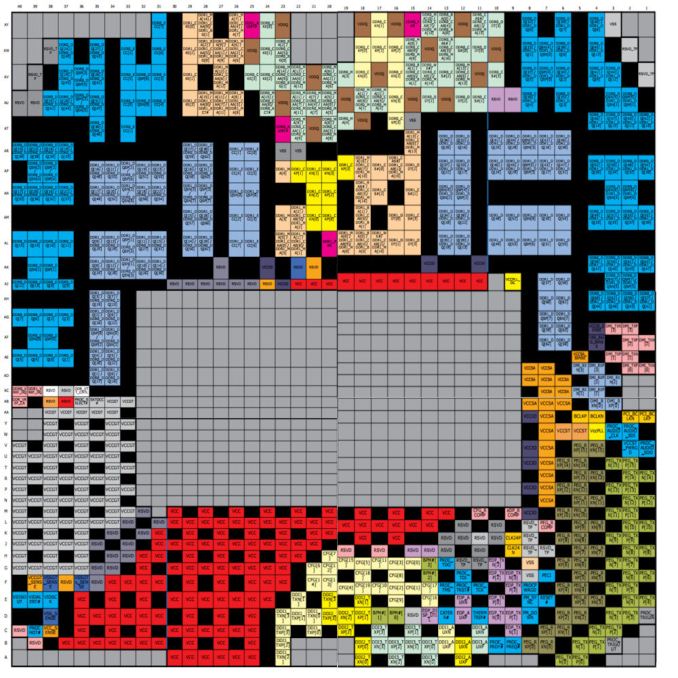
Coffee Lake (left), Kaby Lake (right) - not to scale
Image from David Schor, Wikichip
With the new CPUs, more pins are converted from RSVD (reserved) to VCC (power) and VSS (ground), specifically, there are 18 more power pins and 14 more ground pins, with a slight rearrangement in how the pins are provided. Most of the changes can be seen just above the central blank area to the left, where grey RSVD areas are now red.
In any regular generational change, the pin-out adjustment is to be expected. This is usually accompanied by a change in the socket, such as from one flavor of LGA115x to another flavor of LGA115x, in order to avoid any confusion as to what processors work in what motherboards. These sockets might have been physically similar, such as the socket 775 and socket 771 processors, but notched differently to avoid misplacing a CPU into the wrong socket. But this difference does not exist for Coffee Lake.
Physical Design: Notches
So the pin-outs for Coffee Lake and Kaby Lake are different, especially with the support for hex-core processors, but that is not a big story. What is a big story is as the physical socket being identical to the last platform: both use LGA1151. To compound the issue, both sets of processors have the same notches in the same places on their packages, making it very easy to place the wrong CPU in the wrong motherboard. Notches are typically used to physically restrict which processors go into which motherboards. Intel decided there was no need to differentiate this time around.
Whoever at Intel thought this was a good idea needs to reevaluate their decisions. If the new CPU was labelled as LGA1153, still had 1151 pins but slightly different notches, this wouldn’t be an issue because users would not be able to misplace (and potentially damage) their new CPUs by placing them in the wrong motherboards.
Integrated Graphics
Blowing up specialized sand aside, there is going to be a few differences in the capabilities of each platform. The new processors will support HDCP2.2 on both DisplayPort and HDMI, although an external LSPCon is still needed for HDMI 2.0.
The video outputs for Coffee Lake will be similar to that on Kaby Lake, with three display pipes supported for motherboard manufacturers to configure as needed.
The full decode/encode support is listed below.
Perhaps surprisingly, Intel did not explicitly mention the state of the integrated graphics in the new set of processors during our pre-briefing. This is odd, especially given the amount of time spent praising the virtues of previous generations of the graphics. Due to the early announcement of the processors last week, more details have emerged.
All the six processors being made available today will have Intel’s UHD Graphics 630. This is basically identical to the previous generation's HD Graphics 630, except the name is now UHD, which we suppose is for marketing purposes now that UHD content and displays are more ubiquitous when the naming first started. The other change is HDCP2.2 support.
We were told that there are performance improvements with the new graphics package, mainly from an updated driver stack but also increased frequencies. All the parts will have an idle frequency of 350 MHz, and boost up to the following frequencies:
| Intel 8th Generation 'Coffee Lake' Desktop Processors | ||||||
| i7-8700K | i7-8700 | i5-8600K | i5-8400 | i3-8350K | i3-8100 | |
| Integrated Graphics | GT2: 24 EUs | GT2: 23 EUs | ||||
| IGP Base Freq | 350 MHz | 350 MHz | ||||
| IGP Turbo | 1.20 GHz | 1.20 GHz | 1.15 GHz | 1.05 GHz | 1.15 GHz | 1.10 GHz |
In the case of the Core i7-8700K, this is a 50 MHz jump over the previous generation.
The Intel Z370 Chipset
From a high level, the Z370 chipset is identical to the Z270 chipset. The connectivity is the same, the number of supported PCIe 3.0 lanes is the same, the available bifurcation is the same, the controller support is the same: it is the same chipset under a new name, to help identify the new motherboards that support Intel’s 8th Generation processors compared to the previous chipset for the previous generation of processors.
From the chipset directly we get 20-24 PCIe 3.0 lanes, six SATA 6 Gbps ports with support for RAID 0/1/5/10, a total of 14 USB ports (either 2.0 or 3.0, up to a maximum of ten of USB 3.0), and support for network controllers, support for Thunderbolt 3, and support for Intel’s Optane memory as a boot drive. It’s critical that we say ‘support’ here, because the diagram above from Intel is misleading: Intel is not supporting Thunderbolt directly from the chipset, and motherboard manufacturers will have to include a Thunderbolt 3 controller in order to do so.
So on the face of it, the chipset is not too different. What will be different is on the motherboard-as-a-whole side.


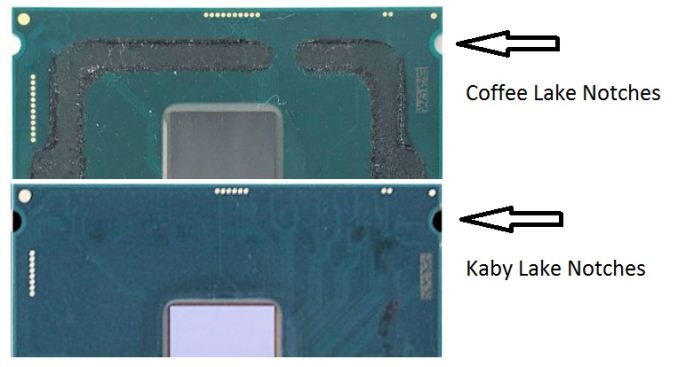
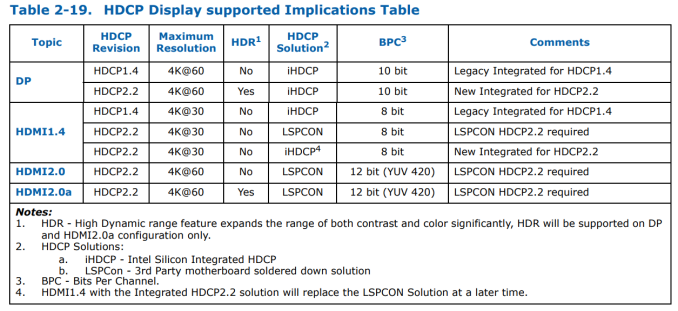
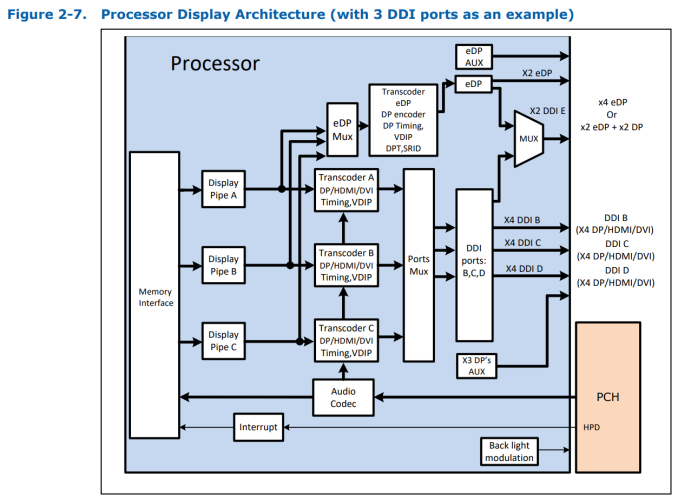
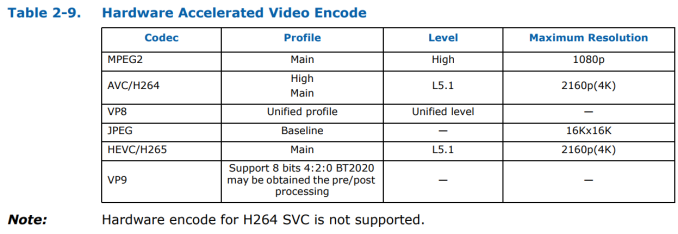
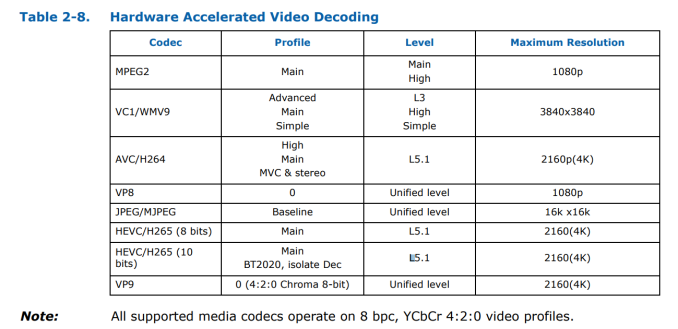









222 Comments
View All Comments
FireSnake - Thursday, October 5, 2017 - link
Awesome revies! Let's read...prisonerX - Thursday, October 5, 2017 - link
No need, here is a quick summary: "Intel blind panic."StevoLincolnite - Thursday, October 5, 2017 - link
At-least they have finally soundly beat my 3930K in the mainstream after 6 years.Still. No point me upgrading just yet.
mapesdhs - Friday, October 6, 2017 - link
Even then there's an interesting option if you want threaded performance; I just upgraded to a XEON E5-2680 v2 (IB-EP) for 165 UKP. Lower 1T speed for sure, but MT should be the same or better as a 3930K @ 4.8. No oc means more stable, less heat/noise/power, and being IB-based means it ups the slots to PCIe 3.0. Not a relevant choice for gaming, but a possibility for those doing VMs, rendering, etc., and just want to get by for a little while longer.Breit - Friday, October 6, 2017 - link
OR search for an XEON E5-1680v2... :)It's an Ivy Bridge-E 8c/16t chip that will fit in Sandy Bridge-E mainboards (x79) and has an unlocked multiplier opposed to this E5-2680v2. So with this you won't lose your overclocking ability.
But in the end, I guess that the greatly reduced power draw and the more "modern" platform from an i7-8700K system compared to the x79 platform will give it the edge here.
mapesdhs - Monday, October 9, 2017 - link
Very interesting that the 1680 v2 is unlocked, I didn't know that.Alas though, availability of the 1680 v2 is basically zero, whereas the 2680 v2 is very easy to find, and the cost of 1680 v2s which are available (outside the UK) is extremely high (typical BIN of 600 UKP, normal auction start price of 350 UKP, completed listings only shown for BIN items which were purchased for between 500 and 600 UKP). By contrast, I bought several 2680 v2s for 165 UKP each. Testing on a P9X79 WS (all-core turbo of 3.1) gives a very impressive 15.44 for CB 11.5, and 1381 for CB R15 which is faster than a stock 8700K (for reference, the 1680 v2 scores 1230 for CB R15). Note the following page on AT has a very handy summary of all the turbo bin levels:
https://www.anandtech.com/show/7852/intel-xeon-e52...
So, I'm very pleased with the 2680 v2 purchase, it's faster than my 3930K @ 4.8, runs with very low temps, much lower power draw, hence less heat, less fan noise and since it's not oc'd it'll be solidly reliable (this particular test system will eventually be in an office in India, so power/heat/reliability is critical). For the target systems in question, it's a great solution. Only thing I noticed so far is it didn't like me trying to set a 2133 RAM speed, but it worked ok at 1866; I can probably tighten the timings instead, currently just at 9/11/10/28/2T (GSkill 32GB kit, 8x4GB).
The 4930K I have though will go into my gaming system (R4E), since I don't mind the oc'ing fun, higher noise, etc., but it's not a system I'll use for converting video, for that I have a 6850K.
Ian.
MrSpadge - Friday, October 6, 2017 - link
Full throttle: yes. Panic: no. Blind: no.Zingam - Saturday, October 7, 2017 - link
Can you buy it? No? Paper launch of Unobtanium 8000? -> panic, PR propaganda bullshit and dirty Intel marketing tactics as usual targeted at lamer fanboys.This comment is written by an Intel user! ;)
prisonerX - Saturday, October 7, 2017 - link
We've got enough dumb Intel apologists here already, thanks.coolhardware - Sunday, October 8, 2017 - link
The i7-8700 is *finally* going to replace my trusty i5-2500K.Ordered my 8700 on Amazon http://amzn.to/2y9IamG ($319) and looking forward to a nice upgrade :-) That is a lot of CPU for the money IMHO.
Kudos to AMD for bringing competition back to the CPU market!